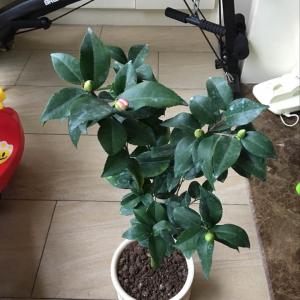动态 (175)
Zeev Kwan
2023年10月01日

Introduction
Parenting is a profound journey filled with challenges and rewards. At the heart of effective parenting lies the art of positive parenting. One of its essential aspects is nurturing resilience in our children. Resilience is the ability to bounce back from adversity, adapt to challenges, and thrive in the face of difficulties. In this article, we'll delve into the intricacies of positive parenting and explore how it plays a pivotal role in fostering resilience in kids, providing them with invaluable life skills.Understanding Resilience
Resilience is a multifaceted quality that empowers children to navigate life's ups and downs successfully. It's not about shielding them from difficulties but about equipping them with the skills to confront and overcome adversity. Resilient kids have a sturdy foundation that enables them to learn from setbacks, develop problem-solving skills, and emerge from challenges stronger and more confident.Building Trust and Connection
The foundation of positive parenting rests on building a deep and trusting connection with your child. This connection fosters open communication, active listening, and empathy. When children feel safe and understood, they are more likely to share their thoughts and feelings. This bond creates a secure base from which they can explore the world and face challenges with confidence.Setting Realistic Expectations
Positive parenting involves setting age-appropriate and realistic expectations for your child. This helps them develop a healthy sense of self-worth and resilience. Encourage them to take on challenges while acknowledging their limitations. By striking this balance, you enable them to build confidence in their abilities while understanding that it's okay to ask for help when needed.Teaching Problem-Solving Skills
Resilience is closely tied to problem-solving skills. Positive parenting encourages children to think critically and find solutions to their own problems. Instead of solving everything for them, guide them through challenges, encouraging them to explore different options and learn from their choices. This hands-on approach empowers them to face future obstacles with resilience and self-assuredness.Fostering a Growth Mindset
A growth mindset is a key element of positive parenting. It emphasizes the value of effort over innate talent. Teach your child that mistakes are opportunities for growth and learning. By embracing this mindset, they will approach challenges with determination and resilience, knowing that their abilities can improve through dedication and practice.Embracing Positivity and Optimism
Positivity and optimism are like guiding stars in the realm of positive parenting. Model these traits for your child by maintaining a hopeful outlook, even when facing adversity. Show them how to reframe challenges as opportunities for growth and development. This perspective shift not only strengthens their resilience but also enriches their overall quality of life.Emotional Regulation
Resilience includes the ability to manage emotions effectively. Positive parenting encourages children to recognize and express their feelings in a healthy way. Teach them coping strategies such as deep breathing, journaling, or seeking support from a trusted adult. These tools empower them to handle emotional challenges, fostering resilience in the process.Encouraging Independence
Positive parenting strikes a balance between nurturing independence and providing a safety net. Encourage your child to take on age-appropriate responsibilities and make choices. When they experience both success and failure, they acquire valuable life lessons that contribute to their resilience. This independence builds their confidence in handling various situations.Supporting a Supportive Environment
Create a supportive home environment where your child feels safe to explore, learn, and make mistakes. Encourage their interests and passions, and be there to celebrate their successes and provide comfort during failures. This atmosphere of love and support forms the fertile ground in which resilience can flourish.Modeling Resilience
Children learn by example. Model resilience in your own life by facing challenges with courage and determination. Share your experiences of overcoming adversity and emphasize the importance of resilience. When your child sees you bounce back from setbacks, they are more likely to adopt a resilient mindset themselves.Conclusion
In the grand tapestry of parenting, positive parenting emerges as a vital brushstroke, nurturing resilience in our children. It lays the foundation for trust, realistic expectations, problem-solving skills, and a growth mindset. Positivity, emotional regulation, and the support of a loving environment serve as the canvas upon which resilience is painted. As parents, we hold the palette, and with every stroke of positive parenting, we craft resilient children who will flourish in adversity and thrive in the face of life's challenges.
文章
Zeev Kwan
2023年09月27日

Introduction
In a world often filled with stress and negativity, the power of positivity stands as a beacon of hope. Beyond its impact on our daily lives, positivity has an intriguing link to our longevity and overall health. In this article, we embark on a journey to explore the profound connection between positivity and longevity, shedding light on how cultivating a positive mindset can lead to a longer, healthier life.The Science Behind Positivity
Research has shown that maintaining a positive outlook on life can have remarkable effects on our physical and mental well-being. Positivity is associated with lower stress levels, reduced risk of chronic diseases, and enhanced immune function. When you maintain a positive attitude, your body's stress response is lessened, leading to lower levels of inflammation, which is a key driver of various health problems.Positivity and Stress Reduction
Chronic stress is a silent killer, contributing to heart disease, diabetes, and other life-threatening conditions. Positivity acts as a shield against the detrimental effects of stress. When you approach life with a positive mindset, you're better equipped to cope with stressors, leading to a healthier heart and a lower risk of stress-related diseases.Longevity Through Social Connections
Positivity not only benefits you but also those around you. Positive individuals tend to foster stronger social connections, which have been linked to longevity. Having a robust social network provides emotional support and reduces feelings of loneliness, which can negatively impact health. By radiating positivity, you attract positive people into your life, enhancing your social bonds and potentially adding years to your life.Positivity and Healthy Habits
A positive mindset can motivate you to adopt and maintain healthier lifestyle choices. When you view exercise, a balanced diet, and adequate sleep as ways to nurture your well-being rather than as burdensome tasks, you're more likely to embrace these habits. These healthy practices, in turn, contribute to a longer and more vibrant life.The Mind-Body Connection
The mind and body are intricately connected, and positivity serves as the bridge between them. Studies have shown that a positive attitude can boost the body's production of endorphins, natural painkillers, and mood elevators. This not only enhances your emotional state but also has a direct impact on your physical health, contributing to longevity.Practical Strategies for Cultivating Positivity
Cultivating positivity is a lifelong journey that requires effort and mindfulness. Here are some practical strategies to help you embrace positivity and its potential benefits for longevity:1. Gratitude Journaling
Keep a journal to record things you're grateful for each day. Focusing on positive aspects of your life can shift your perspective and boost your mood.2. Mindfulness Meditation
Practice mindfulness meditation to stay present and reduce negative rumination. This can help you manage stress and maintain a positive outlook.3. Surround Yourself with Positivity
Build a supportive and positive social network. Spend time with people who uplift you and share your values.4. Practice Self-Compassion
Be kind to yourself and practice self-compassion. Treat yourself with the same kindness you would offer to a friend facing challenges.Conclusion
As we navigate the intricate relationship between positivity and longevity, it becomes clear that our mindset holds the power to shape our destiny. By embracing positivity, we not only enhance our emotional well-being but also set the stage for a longer and healthier life. Positivity serves as a guardian against stress, a catalyst for healthy habits, and a bridge between our minds and bodies. So, let us embark on this journey of cultivating positivity, for in doing so, we unlock the secrets to a life filled with joy, vitality, and longevity.
文章
Zeev Kwan
2023年09月24日

Introduction
In the hustle and bustle of our daily lives, one often forgets to prioritize a crucial aspect that paves the way for a secure and comfortable future – financial planning. While it may seem daunting at first, financial planning is like a compass that guides us towards a prosperous and worry-free life. In this article, we'll explore the art of financial planning and how it can lead to a life of comfort and peace of mind.Setting Clear Goals
The foundation of any effective financial plan is setting clear and achievable goals. These goals can be short-term, like buying a new car or taking a dream vacation, or long-term, such as retiring comfortably or buying a home. Identifying your goals provides a sense of direction, allowing you to create a roadmap for your financial journey.Budgeting: The Key to Success
A well-structured budget is the cornerstone of financial planning. It helps you understand where your money is coming from and where it's going. Start by tracking your income and expenses. Categorize your expenses into essentials (like housing, food, and utilities) and non-essentials (like entertainment and dining out). This step will enable you to identify areas where you can cut costs and redirect funds toward your financial goals.Building an Emergency Fund
Life is unpredictable, and unexpected expenses can quickly derail your financial plans. That's why it's essential to build an emergency fund. Aim to save at least three to six months' worth of living expenses in a high-yield savings account. This safety net will provide peace of mind and financial stability during challenging times.Reducing Debt
High-interest debt, such as credit card debt, can drain your finances and hinder your ability to achieve your goals. As part of your financial plan, prioritize paying down debts. Start with high-interest debts first and gradually work your way down. The sooner you reduce your debt, the more financial freedom you'll gain.Invest Wisely
Investing is a powerful tool for growing your wealth over time. Consider diversifying your investments across different asset classes, such as stocks, bonds, and real estate. If you're unsure about investing, consult a financial advisor who can help you make informed decisions based on your goals and risk tolerance.Retirement Planning
One of the most critical aspects of financial planning is preparing for retirement. Start saving for retirement as early as possible to take advantage of compounding interest. Explore retirement account options like 401(k)s and IRAs, which offer tax advantages. Determine how much you'll need to retire comfortably and adjust your savings accordingly.Insurance Coverage
Insurance is a fundamental part of financial planning. Ensure you have adequate coverage for health, life, auto, and home insurance. Adequate insurance protects you and your family from unexpected financial burdens and provides peace of mind.Review and Adjust
Financial planning is not a one-time activity; it's an ongoing process. Regularly review your financial goals, budget, investments, and insurance coverage. Life circumstances change, and your financial plan should adapt accordingly. Make adjustments as needed to stay on track towards your goals.Conclusion
In the journey of life, financial planning is your trusty companion, ensuring that you navigate the waters of uncertainty with confidence. By setting clear goals, budgeting wisely, reducing debt, investing smartly, and preparing for retirement, you can secure a comfortable and worry-free future. Remember that financial planning is not about restricting your present but enhancing your future. So, take the first step today, and let your financial plan be the blueprint to a life of comfort and fulfillment.
文章
Zeev Kwan
2023年09月20日

Introduction
In the relentless pursuit of happiness and a fulfilling life, individuals often overlook one of the most potent tools at their disposal - the practice of gratitude. This simple, yet profoundly transformative practice, stands as a beacon of positivity, fostering happiness, well-being, and a deeper connection with the world around us. Rooted deeply in various cultural and spiritual traditions, gratitude has now also found backing in scientific research for its positive impact on overall life satisfaction. This comprehensive guide seeks to elucidate the transformative power of gratitude, showcasing its role as a cornerstone in building a life resplendent with contentment and joy.Chapter 1: The Psychological Foundations of Gratitude
In our endeavor to comprehend the powerful role of gratitude in shaping a fulfilling life, we first delve into its psychological foundations. This chapter intricately dissects the cognitive processes and biological underpinnings behind gratitude, presenting a compelling case for its role as an essential component in crafting a satisfying and enriched life.The Neurobiology of Gratitude
Gratitude is far more than just a positive emotion or a fleeting feeling of happiness. It represents an intricate neurobiological process that profoundly influences the structure and function of the human brain. Engaging in acts of gratitude stimulates neural pathways associated with happiness and well-being, fostering a mindset that appreciates life's multifaceted blessings. In this section, we explore the scientific phenomena that underlie the practice of gratitude, discussing how it can reshape our brain's neural circuits to enhance psychological well-being and cultivate a richer, more fulfilling life.Gratitude and Mental Health
The embrace of gratitude serves as a formidable ally in bolstering mental health. By focusing on positive experiences and appreciating life's blessings, individuals can mitigate the symptoms of depression and anxiety. This section delves deeply into the profound impacts of gratitude on mental health, illustrating its role in enhancing mood, reducing stress, and fostering a positive and resilient outlook on life. Through empirical evidence, we underscore how incorporating gratitude into daily practices can serve as a buffer against mental health challenges, steering individuals towards a path of contentment and joy.Chapter 2: Incorporating Gratitude into Daily Life
Understanding the theory and science behind gratitude lays the groundwork, but the true magic unfolds when individuals incorporate it into their daily lives. This chapter offers a plethora of practical guidance on seamlessly integrating gratitude into daily routines, thereby paving the way for a life filled with richness and fulfillment.Keeping a Gratitude Journal
At the heart of cultivating a sustained practice of gratitude lies the concept of keeping a gratitude journal. This simple yet powerful tool serves as a tangible reminder of the countless blessings that adorn one's life. This section provides in-depth insights into the practice of maintaining a gratitude journal, detailing how this habit can cultivate a positive mindset, nurture a deeper appreciation for life's moments, and serve as a sanctuary of joy and positivity amidst life's turbulent phases.Mindful Appreciation
Pairing mindfulness with gratitude yields a practice that fosters a profound connection with the present moment, allowing individuals to bask in the beauty of the 'now'. This section elucidates the practice of mindful appreciation, offering guidance on cultivating a habit that acknowledges and appreciates the beauty and positivity encapsulated in daily experiences. Through real-life anecdotes and practical tips, we explore how this habit can anchor individuals to a life overflowing with happiness and fulfillment.Chapter 3: The Ripple Effect of Gratitude
Gratitude, when practiced with sincerity and consistency, transcends the individual sphere and influences the broader community, creating waves of positivity and harmony. This chapter delves into the ripple effect of gratitude, emphasizing its role in fostering harmonious relationships and building a supportive and loving community.Gratitude and Relationships
In the context of relationships, gratitude stands as a nurturing force that fosters empathy, strengthens bonds, and engenders harmonious interactions. This section explores the transformative impact of expressing gratitude in relationships, discussing how it can build trust, foster understanding, and create a foundation for relationships that are rich in love, respect, and mutual appreciation. Through various perspectives, we illustrate how gratitude can be a guiding force in crafting relationships that are both fulfilling and enriching.Fostering a Community of Gratitude
Beyond personal relationships, gratitude holds the immense potential to transform entire communities. By fostering a community grounded in mutual appreciation and support, society can move towards harmony and cohesion. This section delves into strategies and initiatives that can nurture a community of gratitude, discussing how such communities can pave the way for positive societal change, fostering environments where individuals thrive together in harmony and mutual respect.Conclusion
As we navigate the intricate path of life, embracing gratitude emerges as a guiding light, illuminating the way towards happiness and fulfillment. Its transformative effects resonate at both personal and communal levels, fostering a deep-seated appreciation for the multifaceted beauty of life. As individuals cultivate a deep-seated habit of gratitude, they pave the way for lives brimming with joy and contentment, leaving a lasting, positive imprint on the world around them. In the grand scheme of life, the practice of gratitude stands as a simple, yet profoundly transformative tool, guiding individuals towards a life that resonates with true happiness and fulfillment.
文章
Zeev Kwan
2023年09月17日

Introduction
In an age where technology binds us, the need for a physical office space is rapidly diminishing. Digital nomadism, a term that seemed alien a few years ago, has now become a reality for many. This intriguing paradigm shift offers a blend of work and leisure, defying the boundaries set by conventional nine-to-five jobs. This comprehensive guide escorts you through the blossoming world of digital nomadism, where work meets wanderlust, creating a canvas of opportunities and adventures.Chapter 1: The Genesis of Digital Nomadism
As we traverse back in time, it's evident that the seeds of digital nomadism were sown with the advent of the internet and remote working technologies. This chapter retraces the steps of this evolution, unveiling how a concept transformed into a lifestyle embraced by many.1.1 Defining Digital Nomadism
Digital Nomadism transcends the traditional confines of workspaces, offering a fluidity that harmonizes work and travel. A digital nomad is a professional who utilizes technology to perform their job from anywhere in the world, not restricted by geographical boundaries or time zones. This section delineates the intricacies of this lifestyle, offering a glimpse into a world where work is complemented by an ever-changing backdrop of locations.1.2 Historical Perspective
The inception of digital nomadism can be traced back to the technological advancements of the late 20th century. The advent of the internet, followed by the proliferation of laptops and smartphones, laid the foundation for remote work. As technology advanced, the feasibility of a nomadic work lifestyle became a tangible reality, giving birth to a movement that championed freedom and flexibility over the rigidity of office cubicles.Chapter 2: The Appeal of a Nomadic Lifestyle
The allure of digital nomadism lies in its promise of freedom and an enriched work-life experience. This chapter unveils the magnetic appeal of this lifestyle, offering insights into the benefits that have captivated the hearts of modern-day professionals.2.1 Freedom and Flexibility
At the heart of digital nomadism lies an unyielding sense of freedom and flexibility. This lifestyle grants individuals the liberty to choose their work environment, be it a serene beach or a quaint cafe in a bustling city. The flexibility extends to work hours, allowing nomads to tailor their work schedule to suit their preferences, fostering a healthier work-life balance and enhancing productivity.2.2 Work-Life Balance
Digital nomadism heralds a renaissance in achieving work-life balance. It dismantles the monotony of a nine-to-five routine, fostering an environment where work integrates seamlessly with leisure. This balance is not just about physical well-being, but extends to mental health, offering a respite from the stress and burnout associated with traditional work setups.Chapter 3: Challenges and Solutions
While digital nomadism paints a picturesque canvas, it comes with its share of hurdles. This chapter brings to light the potential challenges one might encounter and provides pragmatic solutions to navigate through them successfully.3.1 Connectivity Issues
One of the significant challenges faced by digital nomads is sporadic connectivity. Being constantly on the move means sometimes grappling with unreliable internet connections. The solution lies in pre-planning and ensuring access to high-speed internet wherever they choose to work. Investing in portable internet devices and choosing accommodations with reliable internet connectivity can mitigate this issue.3.2 Legal and Tax Considerations
Embarking on a nomadic lifestyle brings forth legal and tax considerations that vary with jurisdictions. Digital nomads need to be well-versed with visa regulations, work permits, and taxation laws of the countries they intend to work from. Seeking advice from legal and tax professionals can assist in navigating these complex landscapes, ensuring compliance and avoiding potential pitfalls.Chapter 4: Embarking on a Digital Nomad Journey
As the sun rises on a new era of work culture, many are eager to tread the path of digital nomadism. This chapter serves as a beacon, guiding aspiring nomads to embark on a journey adorned with opportunities and adventures.4.1 Choosing the Right Career
The first step towards embracing this lifestyle is selecting a career conducive to remote work. Professions in the fields of writing, graphic design, digital marketing, programming, and consulting, to name a few, offer the flexibility needed for a nomadic lifestyle. This section explores various career paths, offering insights into the skills and qualifications required to venture into them.4.2 Building a Nomad-Ready Skill Set
To thrive as a digital nomad, one needs to foster a skill set that complements this lifestyle. Beyond professional skills, nomads need to be adept at time management, communication, and self-discipline. Learning new languages and adapting to different cultures are also valuable assets in this journey, enriching the experience manifold.4.3 Creating a Workable Routine
While the nomadic lifestyle offers flexibility, establishing a structured routine is paramount to achieving success. This section discusses the importance of creating a balanced routine that harmonizes work commitments with the allure of travel, offering tips on how to maintain productivity while embracing the freedom this lifestyle offers.Conclusion
As the realms of work and leisure merge, digital nomadism stands as a beacon of possibility, offering a vibrant and fulfilling pathway for those yearning to break free from the shackles of conventional work environments. As we navigate through this evolving landscape, it's evident that digital nomadism is not just a trend, but a sustainable lifestyle choice that heralds the future of work.
文章
Zeev Kwan
2023年09月13日

Introduction
The stock market, a bustling marketplace of opportunities and potentials, beckons to those who dare to venture into its vibrant ecosystem. Embarking on this journey requires preparation and a firm grasp of various fundamental concepts. In this comprehensive guide, you'll uncover the secrets to successfully start your stock market investment adventure.Chapter 1: Understanding the Stock Market
The stock market is more than just numbers and fluctuating graphs; it's a dynamic space where businesses seek capital and investors seek profits. Before you dive in, understand the nuances that govern this financial hub.1.1 What is the Stock Market?
The stock market is a marketplace where individuals and institutions buy and sell shares of publicly traded companies. Through this, companies can raise capital to expand their business, while investors get an opportunity to earn potential returns on their investments.1.2 The Importance of the Stock Market
The stock market plays a pivotal role in the health of the economy. It provides a platform for companies to access a broader pool of capital, fostering innovation and creating jobs. Moreover, it allows individuals to grow their wealth, plan for retirement, and achieve financial goals.Chapter 2: Preparing to Invest
Investing in the stock market is not a spontaneous decision. It requires meticulous planning and understanding of your financial landscape. This chapter unveils the steps to get you ready for the investment journey.2.1 Analyzing Your Financial Situation
Before stepping into the world of investments, scrutinize your financial situation. Ensure you have a stable income, a cushion of emergency savings, and are free from high-interest debts.2.2 Setting Clear Goals
Define your investment goals clearly. Whether it's building a retirement nest egg or buying a home, having clear objectives will guide your investment strategies and decisions.Chapter 3: Choosing the Right Investment Approach
Choosing the right investment approach is pivotal. This chapter helps you navigate through various strategies to find the one that aligns with your goals and risk tolerance.3.1 Active vs. Passive Investment
Understand the difference between active and passive investment. While active investment involves constant monitoring and quick decision-making, passive investment is about building a diversified portfolio and holding it for the long term.3.2 Diversification
Learn the art of diversification. Spreading your investments across different sectors and asset classes can help mitigate risks and enhance potential returns.Chapter 4: Making Your First Investment
With a firm foundation, you are now ready to make your first investment. This chapter walks you through the steps to make informed and strategic decisions in the stock market.4.1 Choosing the Right Broker
Selecting a reliable broker is a crucial step. Research different brokerage platforms, considering factors like fees, user interface, and customer service.4.2 Understanding Stock Analysis
Equip yourself with knowledge on how to analyze stocks. Learn about fundamental analysis, which involves evaluating a company's financials, and technical analysis, which focuses on price patterns and market trends.4.3 Making Your First Trade
Making your first trade is a significant milestone. Learn how to place orders, understand different types of orders, and the importance of timing in stock trading.Conclusion
Embarking on the stock market investment journey is an exhilarating venture. With the right knowledge, planning, and strategies, you can unlock a world of financial opportunities and growth. Remember, the stock market is a marathon, not a sprint. Equip yourself with patience and perseverance to achieve long-term success.
文章
Zeev Kwan
2023年09月10日

Understanding the Importance of a Morning Routine
Ingraining a productive morning routine can serve as a cornerstone for achieving a balanced and productive life. Before we delve into the steps to develop your morning routine, let's explore why it is an essential aspect of personal development.The Psychology Behind Morning Routines
A well-structured morning routine helps in cultivating a positive mindset and maintaining mental clarity. It allows you to start your day with intention, rather than being reactive to external pressures.Setting the Pace for the Day
A productive morning routine helps in setting a positive and proactive pace for the entire day. It aids in prioritizing your tasks and focusing on your goals without getting swayed by distractions.Steps to Develop a Morning Routine
Crafting a morning routine that suits your individual needs involves several key steps. Let’s break down the process to make it manageable and effective.Self-Assessment
Begin by assessing your personal needs and preferences. Consider your current lifestyle, commitments, and the goals you aim to achieve through this routine. It's essential to create a routine that aligns with your intrinsic nature and not against it.Define Your Objectives
Define clear objectives for your morning routine. Whether it's cultivating a positive mindset, boosting productivity, or focusing on fitness, having clear goals will guide your actions and help maintain consistency.Experiment and Adjust
Experiment with different activities and structures for your morning routine. It might take some trial and error to find the perfect combination that resonates with you. Be open to making adjustments based on your experiences.Incorporating Elements into Your Morning Routine
A well-rounded morning routine often encompasses various elements that cater to both your physical and mental well-being. Here are some components you might consider incorporating.Physical Activity
Including some form of physical activity, be it yoga, a workout session, or a morning walk, can be an excellent way to kickstart your day. It not only energizes your body but also helps in fostering a positive mindset.Mindfulness and Meditation
Engaging in mindfulness practices or meditation can help in cultivating mental clarity and focus. It allows you to start your day with a calm and centered mind.Nourishment
Ensuring a nutritious breakfast is a vital component of a successful morning routine. It fuels your body and provides the necessary energy to tackle your day’s tasks.Conclusion: Embarking on a Journey of Personal Growth
Developing a morning routine is more than just a series of actions; it's a commitment to fostering personal growth and enhancing your quality of life. As you embark on this journey, remember that consistency is key. Allow yourself the flexibility to adapt and evolve your routine to suit your changing needs and preferences. With time and persistence, you'll find yourself nurturing a morning routine that not only sets the tone for a successful day but also contributes to a richer, more fulfilling life.
文章
Zeev Kwan
2023年09月06日

A Philosophical Enigma and a Scientific Inquiry
Since the dawn of consciousness, humans have relentlessly pursued the enigmatic state of happiness. Philosophers pondered the nuances of joy, equating it with virtue or moral character, while poets echoed the fleeting nature of happiness in their stanzas. As humanity entered the modern era, scientists took the helm, steering the exploration of happiness into arenas such as psychology, neuroscience, and even economics. This investigative journey has unearthed an array of factors that govern our subjective well-being, transforming the philosophical discourse on happiness into a multi-faceted scientific inquiry that interweaves brain chemistry, genetics, and environmental influences into a complex tapestry depicting our pursuit of joy.The Neurochemical Confluence Shaping Our Pursuit of Joy
In the intricate labyrinth of the human brain, a delicate dance of neurochemicals takes place, orchestrating our every emotion, including happiness. Central to this biochemical ballet are neurotransmitters such as serotonin, known for its mood-stabilizing properties and its role in preventing depressive states. Dopamine, another critical player in this chemical confluence, serves as the harbinger of pleasure and reward, motivating us to seek out experiences that bring joy and fulfillment. Moreover, oxytocin, the hormone facilitating social bonds and nurturing trust and empathy, contributes to our feelings of happiness, particularly in the context of relationships. Endorphins join this neurochemical quartet as agents that alleviate pain and induce feelings of euphoria, often manifesting during physical exertion or moments of intense laughter.The Genetic Blueprint of Happiness: Unveiling the Set Point Theory
While our brain's chemical symphony plays a crucial role, the genetic foundations of happiness cannot be overlooked. Researchers propose the 'set point theory,' which asserts that individuals harbor a genetically influenced baseline of happiness. This baseline, shaped by our genetic makeup and early life experiences, serves as a happiness thermostat, to which we revert despite life's oscillations. Notably, this theory does not confine us to a fixed state of happiness but indicates a genetic influence that works in tandem with environmental factors, creating a dynamic interplay between nature and nurture in shaping our subjective well-being.Life Circumstances and the Hedonic Treadmill: A Dynamic Yet Stable Pursuit
A widespread notion prevails that achieving certain milestones or avoiding adversities would lead to lasting happiness or despair. Yet, the 'hedonic treadmill' theory contradicts this, highlighting the transient impact of life events on our happiness levels. It suggests that individuals tend to return to a stable baseline of happiness over time, irrespective of positive or negative life occurrences. This phenomenon prompts a shift in focus from external pursuits to internal states, fostering personal growth, resilience, and adaptability, as individuals learn to navigate the undulating terrains of life with grace and poise.Nurturing Happiness: Mindful Practices and Positive Psychology
In the dynamic landscape of happiness, the burgeoning field of positive psychology offers avenues for enhancing our well-being consciously. Mindfulness practices, for instance, encourage individuals to cultivate a deeper connection with the present, fostering a serene and content state of mind. Additionally, engaging in altruistic activities, nurturing social connections, and expressing gratitude are known to enhance happiness levels, creating a ripple effect that permeates various facets of our lives. Moreover, the pursuit of activities that invoke a state of 'flow,' characterized by deep immersion and a loss of temporal awareness, promises enriched moments of joy and fulfillment.Conclusion: The Ongoing Journey to Decipher Happiness
The exploration of happiness, a subject both personal and universal, continues to intrigue and inspire. As science delves deeper, unveiling the intricate tapestry of factors that contribute to our sense of joy, it offers individuals a nuanced lens to view their happiness journey. It prompts us to consider happiness not as a static endpoint but as a dynamic and ongoing process, molded by a confluence of biological, environmental, and personal factors. Thus, the scientific discourse on happiness not only enriches our understanding but provides tools and insights to foster a deeper, more fulfilling pursuit of life's most cherished state.
文章
Zeev Kwan
2023年09月03日

The Ebb and Flow of Life
Life, as the saying goes, is full of ups and downs. We all face our own sets of challenges, whether personal, professional, or global. The key to navigating these rocky waters isn't necessarily avoiding the obstacles but mastering the art of staying positive despite them.Understanding the Importance of Positivity
Being positive doesn’t mean ignoring the hard realities of life. It means acknowledging these realities and choosing to find light in the darkness. A positive mindset: - Enhances your resilience. - Boosts your immune system. - Improves coping skills during hardships.Strategies to Foster Positivity in Challenging Times
Here are some actionable steps you can take to ensure that your spirit remains unbroken, even in the face of the fiercest storms.1. Limit Exposure to Negative News
While staying informed is crucial, the constant barrage of distressing news can have a severe impact on our mental health. Limit your exposure and choose reputable sources to avoid unnecessary stress.2. Surround Yourself with Positivity
Your environment plays a significant role in shaping your mindset. Surrounding yourself with positive people, uplifting music, or even motivational quotes can keep your spirits high.3. Embrace Gratitude
When times get tough, make a habit of listing things you're thankful for. This can shift your focus from what’s going wrong to what’s going right.4. Seek Support
You don't have to face hard times alone. Reach out to friends, family, or professionals who can provide a listening ear or offer advice.5. Engage in Activities You Love
Doing what you love can serve as a much-needed distraction and boost your mood. Whether it’s reading, cooking, or painting, give yourself permission to take a break and immerse yourself in passion projects.Mindfulness and Meditation
Mindfulness and meditation are powerful tools that can ground you in the present moment and help combat the overwhelming feelings that challenging times may bring.Why Meditate?
Meditation: - Reduces stress. - Enhances self-awareness. - Can improve attention and concentration.Beginning Your Meditation Journey
Start with short sessions and gradually increase your time. Find a quiet spot, focus on your breathing, and let go of any distracting thoughts.Staying Physically Active
Physical health and mental health are closely linked. By staying active, you can keep your body and mind in top shape.Benefits of Exercise
Exercise: - Releases endorphins, which are natural mood boosters. - Improves sleep quality. - Reduces feelings of anxiety and depression.Staying Active at Home
If you're confined to your home, there are still countless ways to get your heart pumping. From yoga to online workout classes, find something that resonates with you and stick to it.Final Thoughts
Staying positive during challenging times is, indeed, a challenge in itself. However, with the right strategies and a resilient mindset, it's possible to find silver linings in even the most daunting situations. Remember, it’s not about waiting for the storm to pass but learning to dance in the rain.
文章
Zeev Kwan
2023年08月30日

Unveiling the Off-Grid Lifestyle
1. Embracing Independence
Pros:
- Self-Sufficiency: Living off the grid involves generating your own energy, water, and even food, reducing reliance on external resources. - Connection to Nature: Off-grid living often involves being surrounded by nature, fostering a deep connection to the environment. - Reduced Expenses: By producing your own resources, you can significantly lower utility bills and living costs.Cons:
- Initial Investment: Establishing an off-grid setup requires a significant upfront investment in equipment and infrastructure. - Learning Curve: Adapting to off-grid living requires learning new skills for energy generation, waste management, and sustainable practices. - Limited Convenience: Off-grid living may involve sacrifices in terms of modern conveniences, such as reliable internet connectivity.Understanding Energy Independence
1. Renewable Energy Sources
Pros:
- Sustainability: Harnessing solar panels, wind turbines, or hydroelectric systems promotes clean energy production and reduces carbon footprint. - Lower Bills: Generating your own energy can lead to substantial savings on electricity bills over time. - Resilience: During power outages or disruptions, you have a reliable energy source that keeps your home functioning.Cons:
- Initial Costs: Setting up renewable energy systems can be expensive, including purchasing and installing the necessary equipment. - Weather Dependency: Energy generation from renewable sources is weather-dependent and may fluctuate based on sunlight, wind, or water availability. - Maintenance: Regular maintenance and occasional repairs are necessary to keep renewable energy systems functioning optimally.Addressing Water and Waste Management
1. Rainwater Harvesting
Pros:
- Sustainable Water Source: Collecting rainwater provides a reliable source of water that can be used for various purposes. - Conservation: Rainwater harvesting reduces demand on municipal water systems, conserving water resources. - Lower Bills: Using rainwater for non-potable purposes can lead to reduced water bills.Cons:
- Initial Setup: Installing rainwater collection systems requires proper infrastructure and filtration mechanisms. - Seasonal Variation: Availability of rainwater may vary with seasons, potentially leading to water scarcity during dry periods. - Maintenance: Regular maintenance is necessary to ensure rainwater collection systems are clean and functional.2. Sustainable Waste Disposal
Pros:
- Minimal Environmental Impact: Proper waste management methods, such as composting and recycling, minimize environmental harm. - Reduced Pollution: Off-grid living encourages responsible waste disposal, preventing pollution of local ecosystems. - Education and Awareness: Adopting sustainable waste management practices promotes awareness of environmental issues.Cons:
- Effort and Education: Implementing sustainable waste disposal requires education and effort to understand proper techniques. - Limited Services: Off-grid areas may lack access to waste collection services, necessitating self-management. - Space Requirements: Composting and waste disposal systems may require space on your property.Assessing Suitability and Lifestyle Alignment
1. Personal Values and Priorities
Before transitioning to an off-grid lifestyle, consider whether your personal values align with self-sufficiency, sustainability, and a connection to nature. Evaluate your willingness to adapt to a lifestyle that requires more hands-on involvement in daily tasks.2. Commitment to Learning
Living off the grid often involves acquiring new skills related to energy generation, water management, and sustainable practices. Assess your willingness to invest time in learning and developing these skills.3. Preparedness and Resilience
Off-grid living requires preparedness and resilience to handle challenges such as power outages, equipment malfunctions, and weather-related disruptions. Evaluate your ability to adapt and find solutions in various scenarios.Exploring a Life Beyond the Grid
The off-grid lifestyle offers a unique opportunity to embrace self-sufficiency, connect with nature, and reduce environmental impact. However, it's essential to carefully consider both the benefits and challenges associated with this lifestyle before making the transition. Assess your values, resources, and willingness to learn as you contemplate whether living off the grid aligns with your aspirations for a more independent and sustainable way of life.
文章
相关用户
















